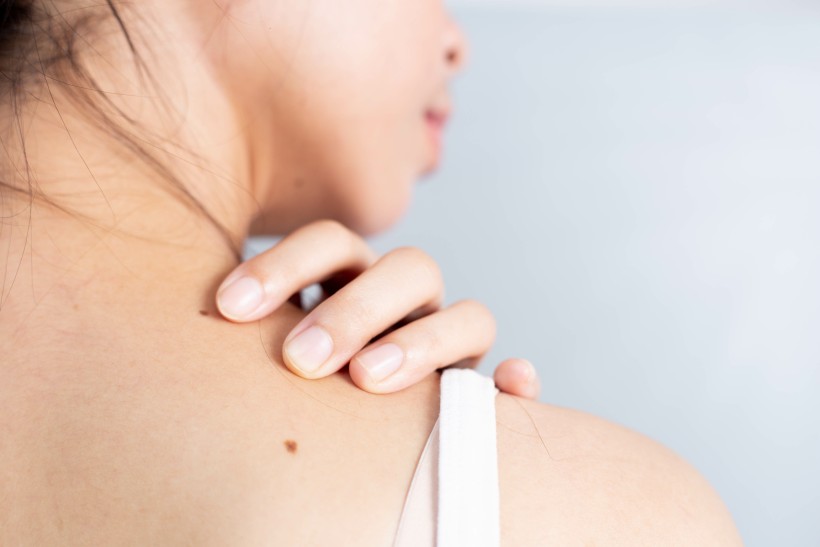
Dysplastic Nevi
Understanding and Managing Dysplastic Nevi
Dysplastic nevi are atypical moles that require careful monitoring due to their potential to develop into melanoma. At Grosse Pointe Dermatology, we provide specialized care to help you manage and monitor these moles effectively.
What Are Dysplastic Nevi?
Dysplastic nevi are atypical moles that have irregular shapes and varying colors, such as shades of brown, tan, or pink. Unlike regular moles, dysplastic nevi can indicate a higher risk of developing skin cancer, particularly melanoma.
This makes regular monitoring and early detection crucial for effective skin cancer prevention. Understanding the characteristics of dysplastic nevi and knowing when to seek professional evaluation are key steps in maintaining your skin's health.
Symptoms and Identification
- Change: Dysplastic nevi are typically irregular in shape versus ordinary moles.
- Shape: They have irregular borders, unlike the smooth edges of normal moles.
- Color: These moles show varying shades of brown, tan, or pink.
- Identification: We provide visual guides to help you recognize dysplastic nevi.
- Self-Exams: Regular self-examinations are encouraged to detect any changes early.
Notice any changes?
Who Is at Risk?
01
Family History of Melanoma:
If you have close relatives who have had melanoma, your risk of developing dysplastic nevi is significantly higher.
02
Prolonged Sun Exposure:
Frequent and unprotected sun exposure increases the likelihood of developing atypical moles, especially in those with fair skin.
03
Multiple Dysplastic Nevi:
Having numerous dysplastic nevi raises the potential for these moles to become malignant.
04
Fair Skin and Severe Sunburns:
Individuals with fair skin and a history of severe sunburns are more susceptible to developing dysplastic nevi and melanoma.
05
Indoor Tanning Bed Use
Importance of Early Detection
Risk of Melanoma:
Dysplastic nevi can potentially develop into melanoma, a dangerous form of skin cancer that requires prompt attention.
Regular Dermatological Evaluations:
Routine professional skin checks are crucial for identifying changes in dysplastic nevi early, allowing for timely intervention.
Self-Examinations:
Conducting regular self-exams helps you detect any suspicious moles between professional visits, enabling early detection and treatment.
Timely Treatment:
Early intervention is key to preventing dysplastic nevi from progressing into melanoma, ensuring long-term skin health and peace of mind.
Comprehensive Treatment and Prevention for Dysplastic Nevi
Surgical Removal:
Precise excision of dysplastic nevi to ensure complete removal and reduce the risk of progression to melanoma.
Biopsy:
Detailed analysis of atypical moles to determine the presence of any malignant cells.
Preventive Guidance:
Expert advice on daily sunscreen use and minimizing sun exposure to lower the risk of developing more dysplastic nevi.
Regular Monitoring:
Ongoing skin checks and self-examinations recommended to detect any changes early and take timely action.
1. Is a dysplastic nevus cancerous?
A dysplastic nevus is not cancerous, but it has the potential to develop into melanoma, a type of skin cancer. Early detection and monitoring by a dermatologist are essential. At Grosse Pointe Dermatology, we specialize in identifying and managing dysplastic nevi to reduce the risk of progression to melanoma.
2. What is the difference between a benign and dysplastic nevus?
A benign nevus is a regular mole that poses no risk, while a dysplastic nevus is atypical, with irregular shape and color, and carries a higher risk of becoming melanoma. Regular skin checks at Grosse Pointe Dermatology help differentiate and manage these moles effectively.
3. Do dysplastic nevi grow over time?
Dysplastic nevi can change in size, shape, or color over time, which is why regular monitoring is crucial. If you notice any changes, consult with Grosse Pointe Dermatology for a professional evaluation and appropriate management.
4. How can you tell the difference between melanoma and a nevus?
Melanoma often presents as a mole with asymmetry, irregular borders, multiple colors, and changes over time, while a benign nevus is usually uniform in shape and color. A dermatologist at Grosse Pointe Dermatology can perform a thorough examination and biopsy if necessary to accurately distinguish between the two.
Protect Your Skin’s Health with Expert Care at Grosse Pointe Dermatology
Grosse Pointe Dermatology is committed to providing expert care and advanced treatments for a range of skin conditions, including dysplastic nevi. Our focus on early detection and personalized treatment plans ensures that your skin remains healthy and protected. With services like surgical removal, biopsies, and preventive guidance, we help you manage skin health effectively. Don’t wait—take proactive steps today by scheduling your skin evaluation with us. Your skin’s health is our priority.
